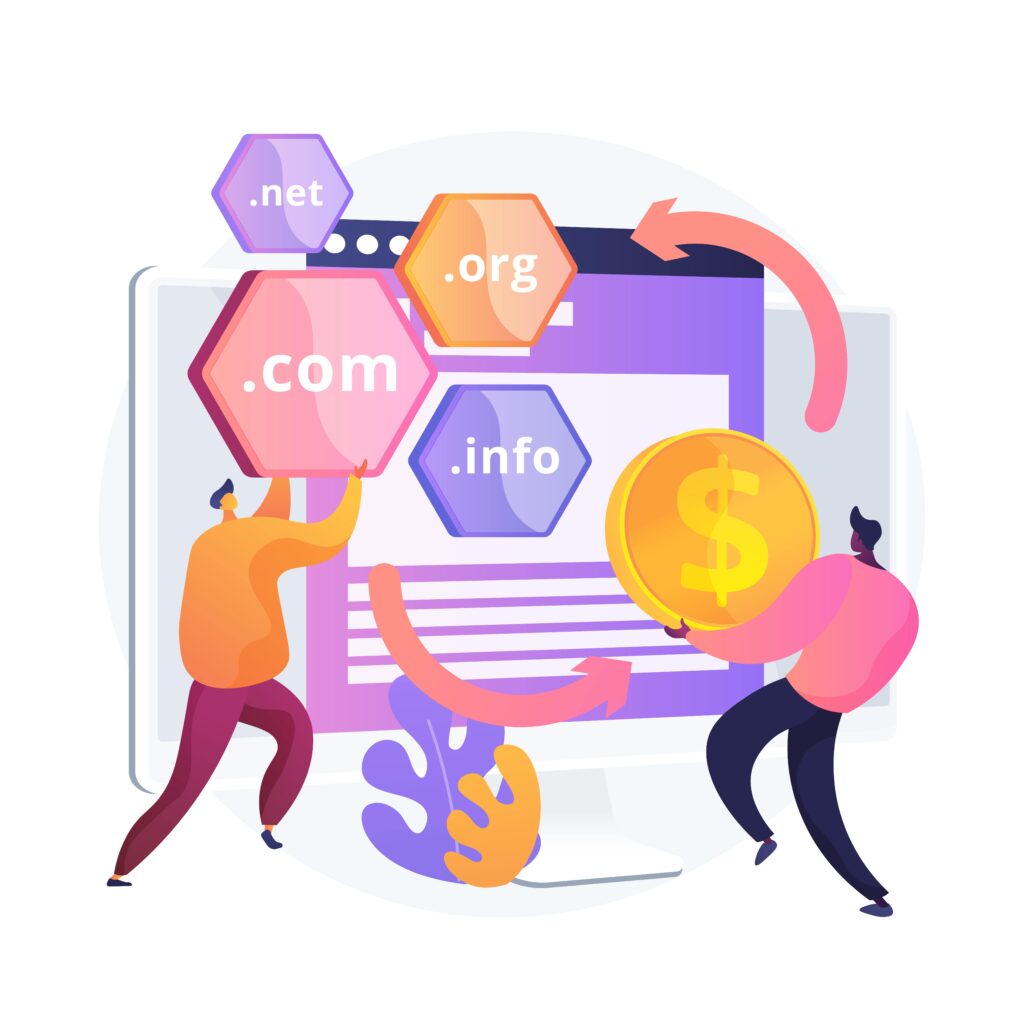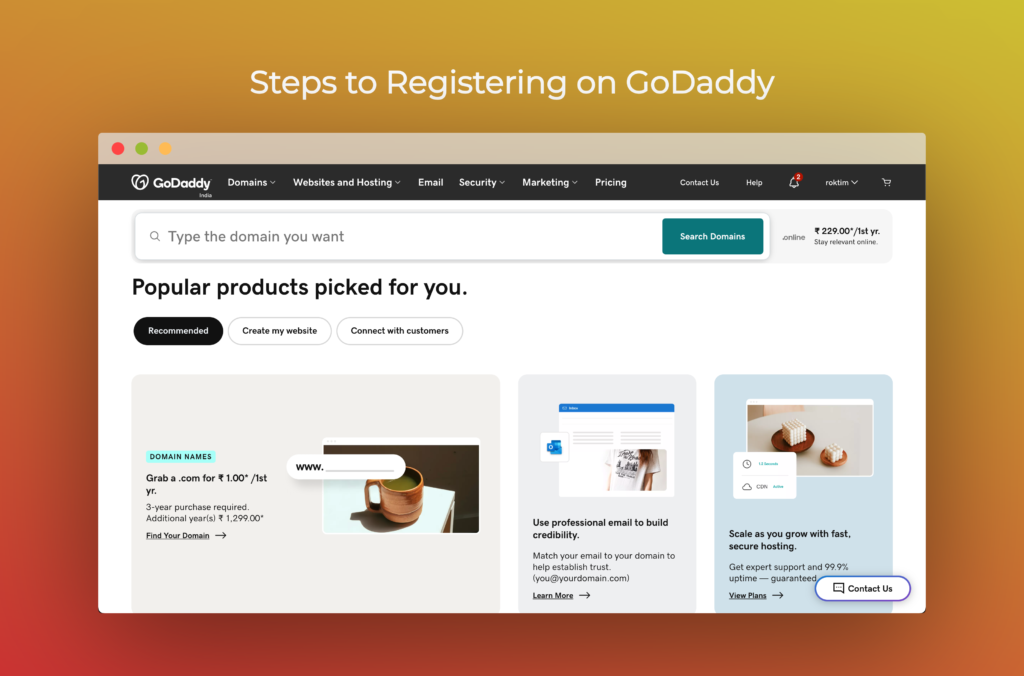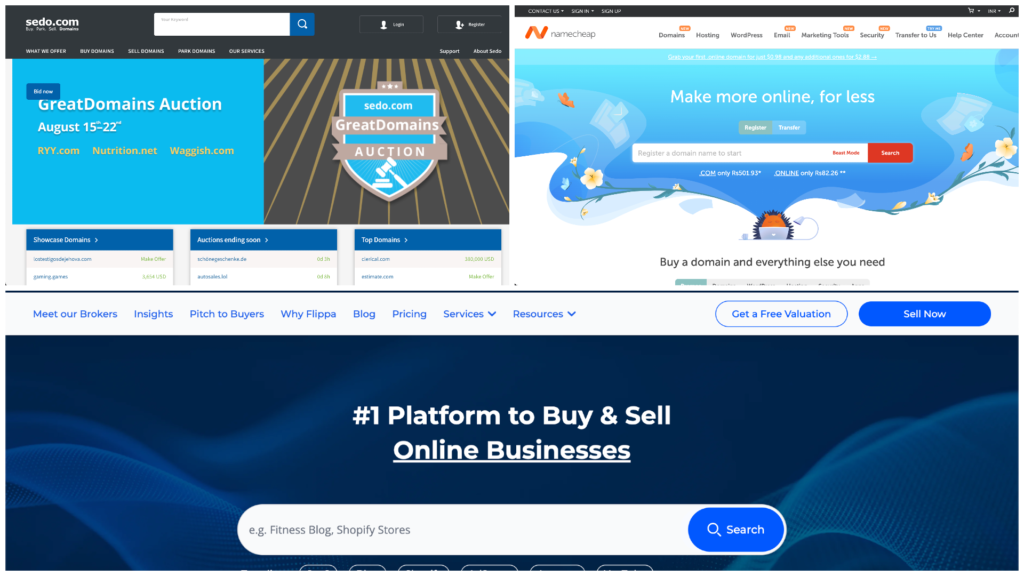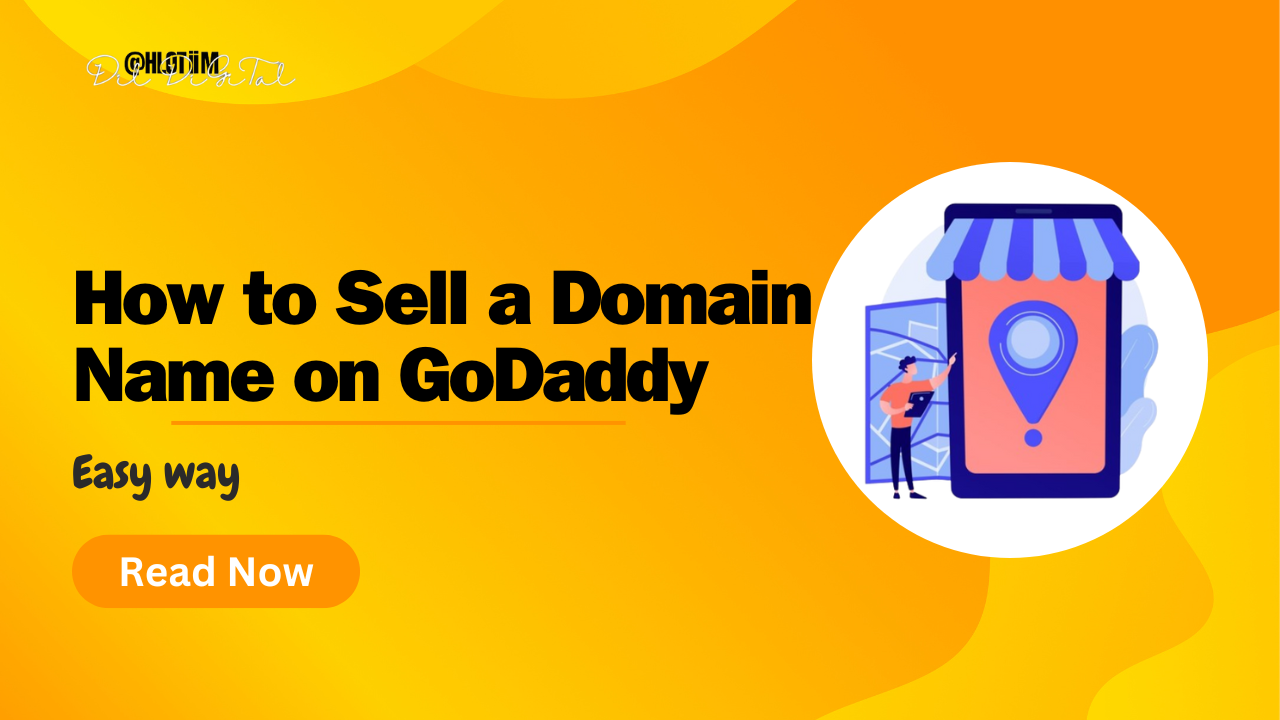Selling a domain name can be a profitable venture if done correctly. Whether you’ve got a premium domain that could fetch a high price or an unused domain just sitting in your portfolio, GoDaddy provides a platform that makes selling easy.
In this guide, we’ll walk you through the entire process of selling your domain on GoDaddy, from valuation to finalizing the sale. Let’s dive in!
How to Sell a Domain Name on GoDaddy
In short you can sell your domain name on godaddy by creating an account and list your domain in the marketplace.

What Is a Domain Name?
Before we get into the nitty-gritty of selling, let’s make sure we’re on the same page. A domain name is your address on the internet—it’s what people type into their browser to reach your site. Think of it as your home address but for your website.
Why Sell a Domain Name?
Maybe you’ve moved on to a new project, or perhaps you have domains that you’re not using. Whatever the reason, selling a domain can free up resources and even bring in some extra cash. The key is knowing how to sell it effectively.
The Role of GoDaddy in Domain Selling
GoDaddy is one of the largest domain registrars in the world, and it offers a marketplace where you can list your domain for sale. Their platform is user-friendly and gives you access to a global audience of potential buyers, making it an ideal place to sell your domain.
Assessing the Value of Your Domain
Before listing your domain for sale, it’s crucial to know what it’s worth. The value of a domain can vary widely based on factors like keyword relevance, length, and market demand. Domains with popular keywords or short, memorable names tend to sell for higher prices.
Tips for Domain Valuation
- Research Comparable Sales: Look at sales of similar domains to get an idea of what yours might be worth.
- Use Valuation Tools: GoDaddy offers a free domain appraisal tool that can give you an estimated value.
- Consider Professional Appraisal: For high-value domains, consider getting a professional appraisal.
Setting the Right Price for Your Domain
Once you have an idea of your domain’s value, it’s time to set a price. You can choose to list your domain with a “Buy Now” price for an instant sale or set it up for auction, where buyers can bid on it. Be realistic with your pricing—overpricing can deter buyers while underpricing can leave money on the table.

Steps to Registering on GoDaddy
If you haven’t already, you’ll need to create a GoDaddy account to list your domain for sale. The registration process is straightforward:
- Visit GoDaddy.com and click on “Sign In” at the top right.
- Select “Create Account” and fill in your details.
- Verify your email address to activate your account.
Navigating the GoDaddy Dashboard
Once registered, you’ll have access to the GoDaddy dashboard, where you can manage your domains, list them for sale, and track your sales progress. The dashboard is intuitive, making it easy to navigate even if you’re a first-time user.
How to List a Domain on GoDaddy
Listing your domain is a simple process. Here’s how:
- Log in to your GoDaddy account and navigate to the “My Products” section.
- Find the domain you want to sell and click on “Sell Domain.”
- Follow the prompts to set your price, auction type, and other details.
Understanding the Listing Options
GoDaddy offers several listing options, including:
- Buy Now: Set a fixed price for an instant sale.
- Auction: Allow buyers to bid on your domain.
- Make Offer: Let buyers submit offers that you can accept or negotiate.
Setting Up a “Buy Now” Price and Auction Options
Choosing between a “Buy Now” price and an auction depends on your sales strategy. A “Buy Now” price is best if you have a clear idea of what your domain is worth and want a quick sale. Auctions can be more profitable if there’s high demand for your domain, as competitive bidding can drive up the price.
Utilizing GoDaddy’s Domain Listing Service
GoDaddy’s Domain Listing Service can help increase the visibility of your domain. For a fee, GoDaddy will promote your domain across its network, potentially reaching more buyers.
External Marketing Strategies
Beyond GoDaddy’s services, you can promote your domain through:
- Domain Forums: Post about your domain on forums like NamePros.
- Email Marketing: Reach out to potential buyers directly via email.
- Press Releases: Announce the sale of your domain through a press release to attract interest.
Leveraging Social Media to Sell Your Domain
Social media platforms like Twitter, LinkedIn, and Facebook can be powerful tools for promoting your domain. Use relevant hashtags, join domain-selling groups, and share your listing with your network.
Writing an Effective Domain Description
An engaging description can make all the difference in attracting buyers. Highlight the benefits of your domain, such as keyword relevance, branding potential, and any existing traffic. Keep it concise but informative.
Choosing the Right Keywords
SEO isn’t just for websites—your domain listing should also be optimized for search. Include keywords that potential buyers might search for, such as “premium domain” or “high-traffic domain.”
Adding Visuals to Your Listing
Adding a logo or screenshot of a live site (if applicable) can enhance your listing’s appeal. Visuals help buyers imagine the potential of the domain and can make your listing stand out.
How Bidding Works on GoDaddy
If you choose to auction your domain, it’s important to understand how bidding works. Buyers place bids during the auction period, and the highest bid at the end wins. GoDaddy will notify you when your auction ends and guide you through the next steps.
Setting Reserve Prices
A reserve price is the minimum amount you’re willing to accept for your domain. If the bidding doesn’t reach this amount, you’re not obligated to sell. Setting a reserve price can protect you from selling too low, but it can also discourage some bidders.
What Happens After the Auction Ends
After the auction ends, if the highest bid meets or exceeds your reserve price, the buyer is notified, and you’ll proceed with the sale. If the reserve price wasn’t met, you can relist the domain or consider lowering your price.
How to Handle Inquiries
When potential buyers show interest in your domain, they may reach out with questions or offers. Respond promptly and professionally. Be ready to provide additional information about your domain’s value and potential.
Tips for Successful Negotiations
Negotiations are a normal part of the selling process. Be prepared to:
- Counteroffer: If a buyer’s offer is lower than expected, counter with a reasonable price.
- Stay Firm: Know your domain’s worth and don’t be pressured into a low sale.
- Be Flexible: Sometimes, a quick sale at a slightly lower price is better than waiting for a higher bid.
Understanding Counteroffers
Counteroffers are common in domain negotiations. If a buyer counters your price, evaluate the offer carefully. Is it close to your desired price? Does the buyer seem serious? Use this information to guide your next move.
The Escrow Process on GoDaddy
GoDaddy uses an escrow service to ensure safe transactions. Once you’ve agreed on a price, the buyer sends payment to the escrow account. GoDaddy holds the funds until the domain transfer is complete, ensuring both parties are protected.
Transferring Ownership of the Domain
Transferring the domain is straightforward on GoDaddy. Once payment is secured, you’ll initiate the transfer through the GoDaddy dashboard. The buyer will receive instructions to complete the transfer on their end.
Payment Methods and Receiving Funds
After the transfer is complete, GoDaddy releases the funds to you. You can choose your preferred payment method, such as PayPal, bank transfer, or check. The process is secure, and funds are typically available within a few days.
Pricing Mistakes
One of the most common mistakes is setting an unrealistic price. Overpricing can scare off potential buyers, while underpricing can lead to missed opportunities. Do your research and set a fair price based on market trends.
Misunderstanding GoDaddy’s Terms
Make sure you understand GoDaddy’s terms and fees before listing your domain. For example, there may be listing fees, commission fees, or conditions related to auctions that could affect your sale.
Handling Buyer Disputes
In rare cases, disputes can arise, such as a buyer backing out or claiming the domain isn’t as described. GoDaddy’s escrow service helps prevent these issues, but it’s important to document everything and communicate clearly with the buyer.
Security and Trustworthiness
GoDaddy is a trusted name in the domain industry, providing a secure platform for both buyers and sellers. Their escrow service ensures that your transaction is safe and that you receive your payment.

Global Reach and Visibility
With millions of users worldwide, GoDaddy gives your domain exposure to a large audience. This increases your chances of finding a buyer quickly and at a fair price.
Access to a Large Pool of Buyers
GoDaddy’s marketplace is one of the largest, meaning more potential buyers are browsing and bidding on domains every day. This competitive environment can lead to higher sales prices and quicker transactions.
Examples of High-Profile Domain Sales
Several high-profile domains have been sold on GoDaddy, such as VacationRentals.com, which sold for a whopping $35 million. These success stories highlight the potential for significant profits when selling the right domain.
Lessons Learned from These Sales
The key takeaways from these successful sales include the importance of a premium domain name, effective marketing, and the value of patience. Even if your domain doesn’t sell immediately, persistence can pay off.
Other Platforms for Selling Domains

While GoDaddy is a popular choice, other platforms also offer domain-selling services, such as Sedo, Flippa, and Namecheap. Each platform has its own advantages and fees, so it’s worth exploring your options.
Pros and Cons of Each Platform
- Sedo: Known for its international reach but has higher commission fees.
- Flippa: Ideal for selling complete websites along with domains but requires more effort in listing.
- Namecheap: Offers lower fees but doesn’t have the same level of buyer traffic as GoDaddy.
Conclusion
Selling a domain name on GoDaddy is a straightforward process, but success depends on preparation and strategy.
By assessing your domain’s value, listing it effectively, and navigating the selling process with care, you can maximize your chances of making a profitable sale. So why wait? Start listing your domains on GoDaddy today and turn those unused URLs into cash!
So I’m sure I have cleared your doubt about how to sell a domain name on godaddy keep visiting and learn new things here in DilDigital.
How long does it take to sell a domain on GoDaddy?
The time it takes to sell a domain can vary. Some domains sell within days, while others may take weeks or even months, depending on demand and pricing.
Can I sell a domain that I just purchased?
Yes, you can sell a domain as soon as you purchase it. However, newly registered domains may not have as much value as older, established ones.
What if my domain doesn’t sell?
If your domain doesn’t sell, you can relist it, adjust the price, or explore other selling platforms like Sedo or Flippa.
Are there fees associated with selling on GoDaddy?
Yes, GoDaddy charges listing fees and a commission on the final sale price. The exact fees depend on the listing type and the selling price.
How do I transfer a domain after it’s sold?
After the sale, you’ll initiate the domain transfer through the GoDaddy dashboard. GoDaddy’s escrow service will guide you through the process, ensuring a secure transfer and payment.
What factors affect the value of a domain name?
Factors like keyword relevance, domain length, market demand, and the presence of popular keywords significantly impact a domain’s value.
How does GoDaddy’s domain auction process work?
GoDaddy’s auction allows buyers to place bids on a domain during a specified period. The highest bid at the end of the auction wins, provided it meets any reserve price set by the seller.
Can I sell multiple domain names at once on GoDaddy?
Yes, GoDaddy allows you to list multiple domain names for sale simultaneously. Each domain can be individually managed and priced.
What are the benefits of using GoDaddy’s Premium Listings for domain sales?
GoDaddy’s Premium Listings provide greater visibility by featuring your domain in search results, which can lead to faster sales and potentially higher prices.
How do I handle negotiations with buyers on GoDaddy?
Negotiating with buyers involves responding to inquiries, making counteroffers, and ensuring that the final price reflects the domain’s true value. Being polite, professional, and clear in communication is key.




One Response